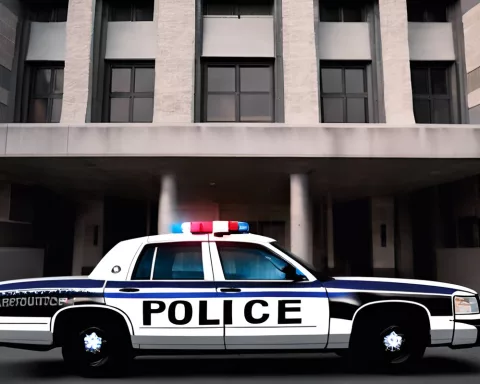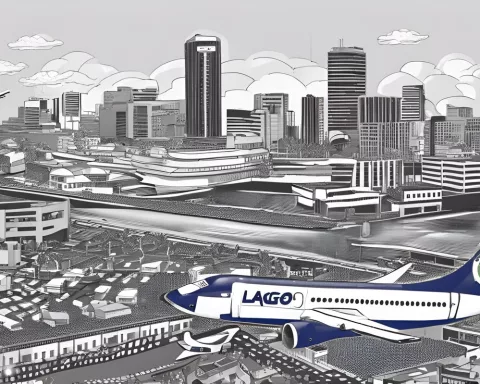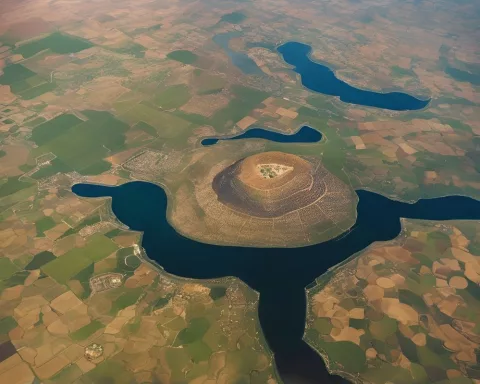Rietfontein, a town in Northern Cape, South Africa, is undergoing a sustainable land management project. Departments of Forestry, Fisheries, and the Environment, and the Agriculture, Land Reform, and Rural Development are working together with funding from the Global Environment Facility. The project aims to address land degradation, climate change, water security, and unemployment while generating long-term benefits for the community. The initiative is a rallying cry for sustainable advancement and demonstrates the power of interdepartmental collaboration in addressing environmental challenges.
Transforming Rietfontein: An Interdepartmental Approach to Sustainable Land Management. The Departments of Forestry, Fisheries, and the Environment, and the Agriculture, Land Reform, and Rural Development are working in unison on this initiative to introduce a sustainable land management project with funding by the Global Environment Facility.
Rietfontein: a picturesque township in Northern Cape, South Africa, is all set to be the epicenter of a revolutionary and sustainable land management project. The Deputy Minister of Forestry, Fisheries, and the Environment, Ms. Makhotso Sotyu, has initiated this project and will lead an inter-departmental site visit to this critical location on November 23, 2023.
Section 1: About the Project
The Beginning
This project is more than just another step towards sustainability in South Africa. It represents the 7th cycle of the Global Environment Facility’s (GEF) sustainable land management projects, underscoring the nation’s resolve towards a greener future. The Departments of Forestry, Fisheries, and the Environment, and the Agriculture, Land Reform, and Rural Development are working in unison on this initiative. Additionally, the International Union for Conservation of Nature strengthens the efforts.
The Motivation
Following the completion of the Kalahari Namib project, which aimed to resolve transboundary issues amongst Botswana, South Africa, and Namibia, these departments decided to continue their efforts in the field. Their goal is not just to counter land degradation, but to introduce a sustainable land management project with funding by the Global Environment Facility.
The Challenge and Opportunity
Rietfontein and its neighboring villages face a complicated environmental puzzle. The prosopis species, a type of alien invasive vegetation, have overrun this region, using disproportionate amounts of water and aggravating land degradation, drought, and issues related to water and food security. Nevertheless, these challenges have become a catalyst for innovation, enabling both departments to address land degradation, climate change, water security, and unemployment simultaneously.
Section 2: Community Engagement and Participation
An Inclusive Approach
Deputy Minister Sotyu is not merely concentrating on implementing solutions from above. She intends to conduct a community engagement session to determine how the community of Rietfontein can contribute to the successful execution of the project. This initiative is not just about managing the land sustainably, it’s about generating employment opportunities that will have long-term benefits for the community.
The Event
The media and others interested in the project are welcome to join the event, slated for November 23, 2023. The day is set to kick off with a project site visit at 09:00 at the Groot Mier Guest House in Northern Cape. Following this, the launch event and community engagement will take place from 10:00 to 14:00 at the Philandersbron Community Hall in Rietfontein.
Those wishing to attend this momentous occasion can RSVP by reaching out to either Merle Van Diemel or Kagiso Letsebe. Peter Mbelengwa is available to offer additional information to media personnel. This event marks a significant step towards a sustainable South Africa, epitomizing the principles of cooperative governance and public participation.
Section 3: The Bigger Picture
Looking Ahead
The GEF7 sustainable land management project signifies a giant leap towards a more resilient future. But, the journey doesn’t stop here. As Rietfontein gears up to confront its environmental challenges boldly, the rest of South Africa is ready to learn from its experiences. It’s more than just a project; it’s a rallying cry for sustainable advancement and a beacon of hope for small towns weighed down by environmental problems.
The Power of Collective Resolve
Rietfontein stands on the cusp of transformation, ready to become a symbol of South Africa’s commitment to a greener, more sustainable future. The project demonstrates the power of collective resolve and the potential of interdepartmental collaboration in addressing environmental challenges. Rietfontein offers a model for small towns across the country and the world, showing how they too can become champions of sustainable progress.
1. What is the Rietfontein sustainable land management project?
The Rietfontein sustainable land management project is an interdepartmental initiative, supported by funding from the Global Environment Facility, that aims to address land degradation, climate change, water security, and unemployment while generating long-term benefits for the community of Rietfontein in Northern Cape, South Africa. The Departments of Forestry, Fisheries, and the Environment, and the Agriculture, Land Reform, and Rural Development are working together on this project.
2. What motivated the Rietfontein sustainable land management project?
Following the success of the Kalahari Namib project, which aimed to resolve transboundary issues amongst Botswana, South Africa, and Namibia, the Departments of Forestry, Fisheries, and the Environment, and the Agriculture, Land Reform, and Rural Development decided to continue their efforts in the field. Their goal is to introduce a sustainable land management project with funding by the Global Environment Facility.
3. What are the challenges and opportunities associated with the Rietfontein sustainable land management project?
Rietfontein and its neighboring villages face a complicated environmental puzzle. The prosopis species, a type of alien invasive vegetation, have overrun this region, using disproportionate amounts of water and aggravating land degradation, drought, and issues related to water and food security. Nevertheless, these challenges have become a catalyst for innovation, enabling both departments to address land degradation, climate change, water security, and unemployment simultaneously.
4. What is the community engagement and participation plan for the Rietfontein sustainable land management project?
Deputy Minister Sotyu intends to conduct a community engagement session to determine how the community of Rietfontein can contribute to the successful execution of the project. This initiative is not just about managing the land sustainably, it’s about generating employment opportunities that will have long-term benefits for the community.
5. Can media and others attend the Rietfontein sustainable land management project event?
Yes, the media and others interested in the project are welcome to join the event on November 23, 2023. The day is set to kick off with a project site visit at 09:00, followed by the launch event and community engagement from 10:00 to 14:00. Those wishing to attend this momentous occasion can RSVP by reaching out to either Merle Van Diemel or Kagiso Letsebe.
6. What is the significance of the Rietfontein sustainable land management project?
The Rietfontein sustainable land management project represents a giant leap towards a more resilient future for South Africa. It demonstrates the power of collective resolve and the potential of interdepartmental collaboration in addressing environmental challenges. Rietfontein offers a model for small towns across the country and the world, showing how they too can become champions of sustainable progress.








